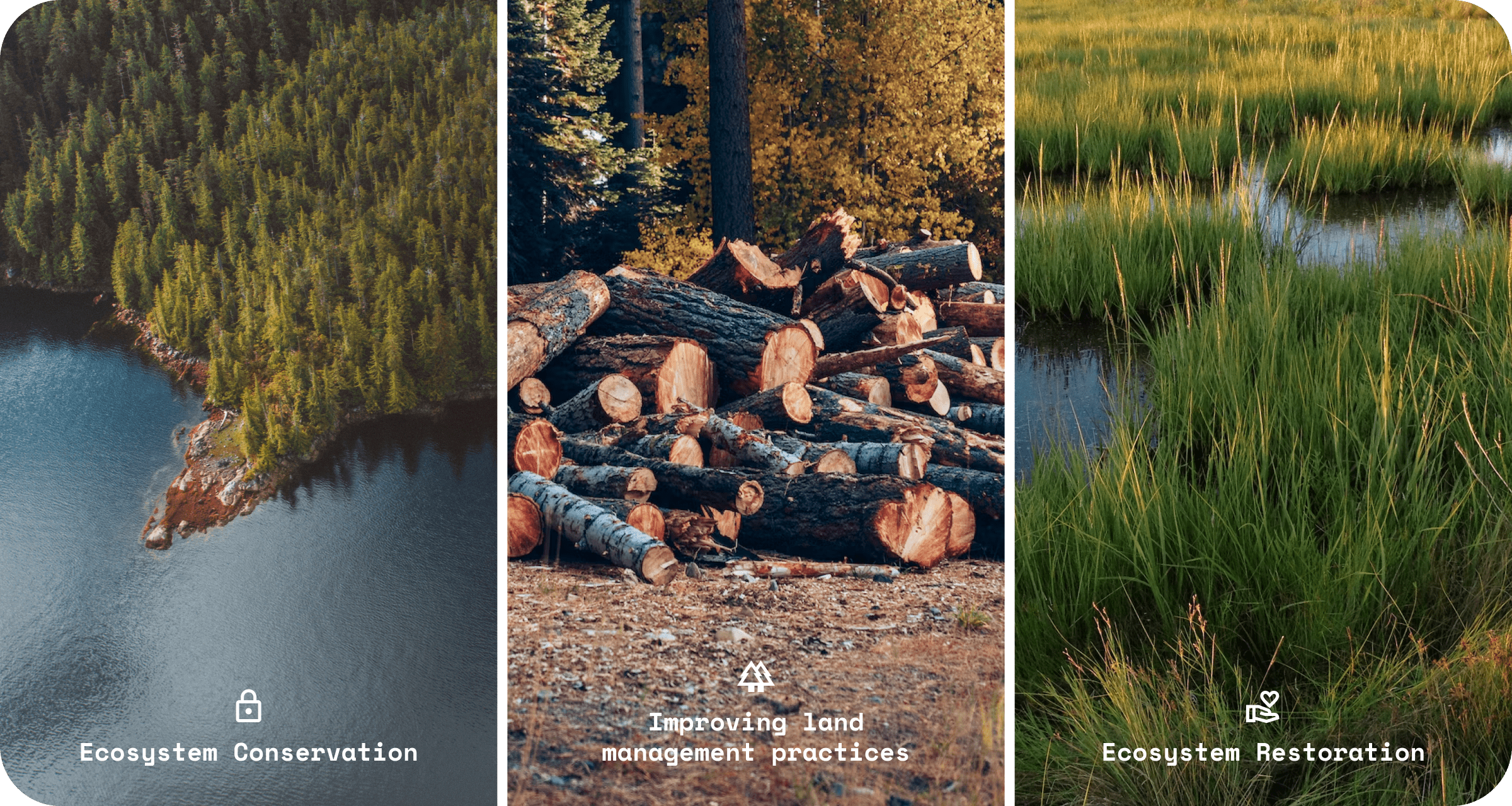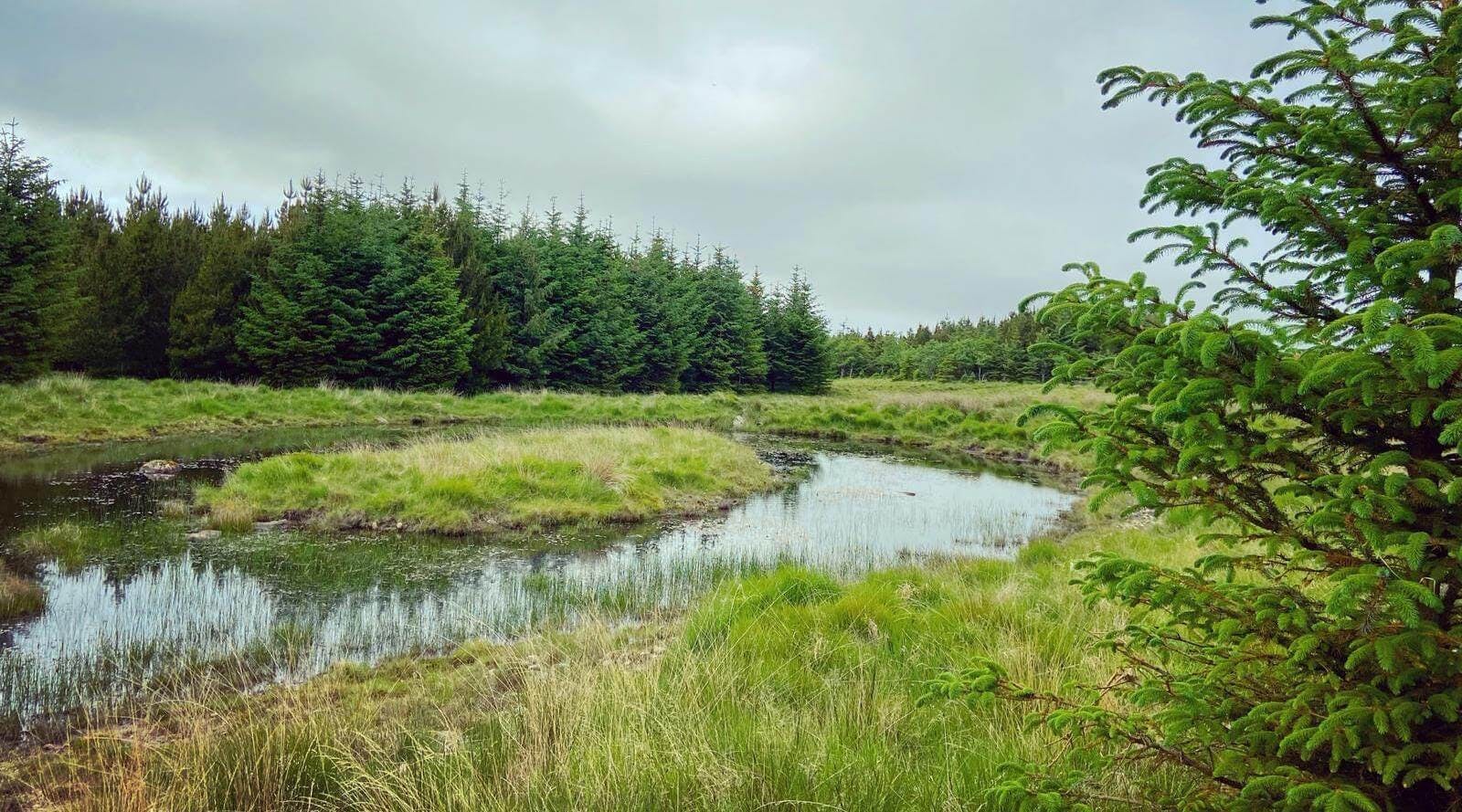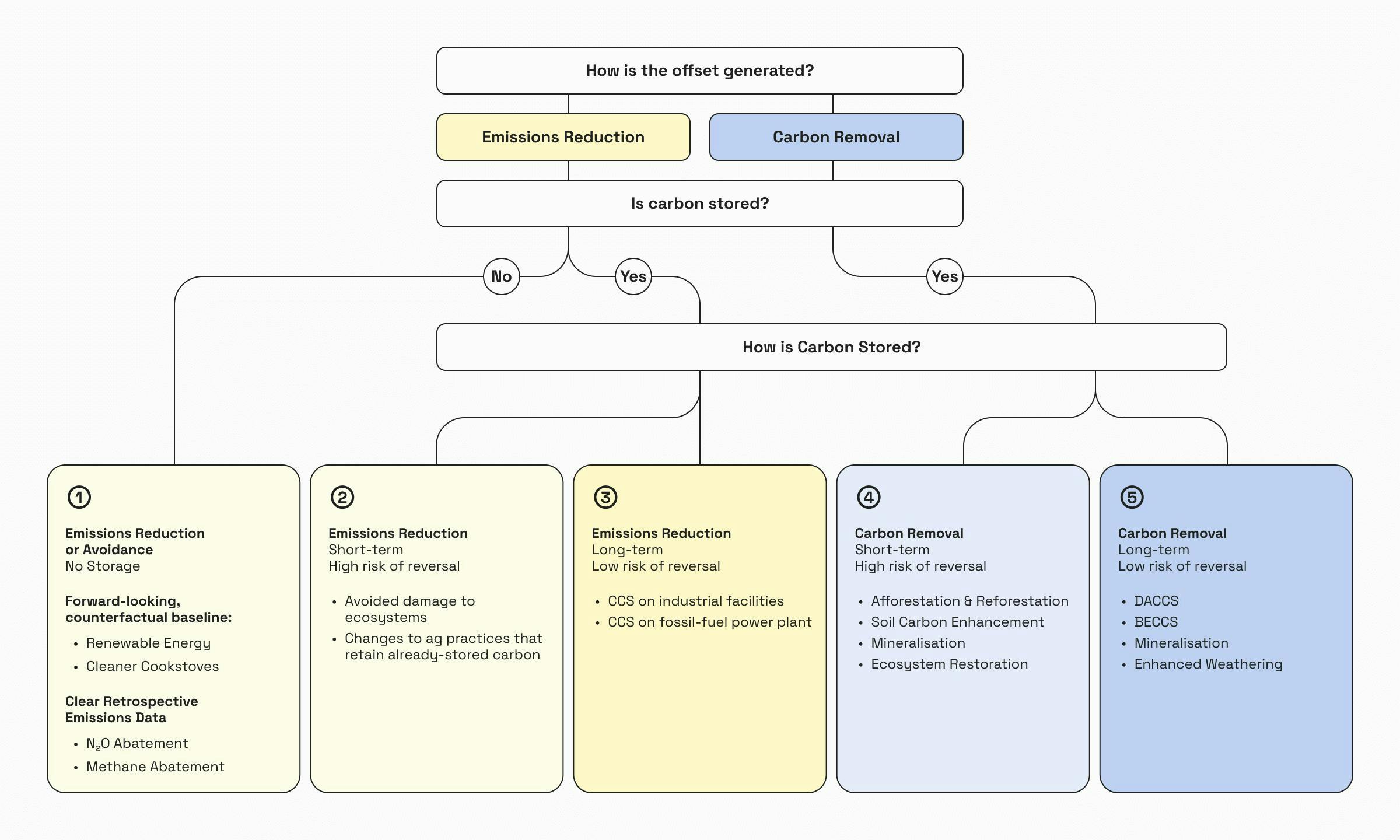

Nature-based solutions can be a powerful tool against climate change.
Oceans, soil, plants, forests (of trees, mangroves, seaweed etc), all naturally absorb and store carbon dioxide – so protecting and enhancing these processes is crucial.
In fact, research by The Nature Conservancy et al. found that nature-based solutions have the potential to offer up to 37% of the climate change mitigation needed by 2030 to keep global temperatures below 2 degrees.
What exactly are ‘nature-based solutions’?
But what exactly are ‘nature-based solutions’?
Well, they’re projects that protect, manage, and/or restore natural ecosystems in order to mitigate climate change – and importantly, they do this whilst also addressing other societal issues to create holistic solutions.
Nature-based solutions are also sometimes referred to as natural climate solutions. The terms are used fairly interchangeably, but ‘natural climate solutions’ tends to be used where the focus is on climate and carbon benefits first and foremost, with co-benefits as of secondary importance – and nature-based solutions as the reverse, with co-benefits as the focus and climate benefits a secondary benefit. Because of this, and our primary focus at Lune being on climate, we’ll use ‘natural climate solutions’ for the rest of this post.
Natural climate solutions broadly fit into the following 3 categories:
- Ecosystem conservation. Conserving or protecting ecosystems that absorb and store carbon – soils, oceans, forests. An example would be a forestry conservation project, protecting a forest from deforestation or illegal logging.
- Ecosystem restoration. Rehabilitating degraded ecosystems – such as recovering a coastal mangrove forest which has been over-harvested or impacted by coastal pollution. Or creating new ecosystems – such as an afforestation project, creating a new forest on land previously used for a different purpose.
- Improving land management practices. Ensuring land owners are employing management practices which promote the health of the land and increase carbon removal potential – for instance, switching from intensive timber production in a forest to more sustainable methods.
Some organisations also include projects such as biochar and enhanced weathering – these are projects that use natural resources or materials and improve or intensify their ability to remove CO2 from the atmosphere. For this article, we’re referring only to projects within the above 3 categories, centred around natural ecosystems.
The element of ‘also addressing other societal issues’ is key to quality within these projects – recognising that there are potential benefits beyond just carbon removal, both to the environment (e.g. improving biodiversity) and to local communities who rely on the ecosystem (e.g. providing job opportunities).

Subscribe for the latest insights into driving climate positivity
How can natural climate solutions address societal issues – a worked example
To be recognised as a high-quality carbon offsetting project, a conservation, restoration, or management project should be explicitly designed and managed to deliver multiple societal and environmental benefits.
Let’s look at an example – an afforestation project.
Afforestation projects plant new trees in an area where there were no trees before. The primary aim of such projects is to create a new forest that absorbs and stores CO2, removing existing carbon from the atmosphere.
Done right, an afforestation project has several additional benefits to the planet:
- Reduced flood risk and flood controlling: trees planted on flood plains reduce runoff and slow water during heavy rainfall, reducing the risk and impacts of flooding.
- Reduced soil erosion: trees reduce soil erosion in several ways – anchoring soil with their extensive root systems, providing protection from wind and rain.
- Improved soil health: fallen leaves produce new organic matter for the soil, providing nutrients and improving soil health.
- Creating new habitats for local wildlife, increasing biodiversity – e.g. the Ackron Mixed afforestation project in Scotland, managed by Treeconomy, was planned specifically to promote biodiversity, planting a mixed variety of native trees to provide home to threatened local species such as short-eared owls and black grouse.
 The Ackron Mixed forest was planned to promote biodiversity, with areas of wetland and open glades amongst trees
The Ackron Mixed forest was planned to promote biodiversity, with areas of wetland and open glades amongst treesAs well as to people:
- Increased crop yield: improved soil health, reduced erosion, and reduced flooding all contribute to improving agricultural land – important in agroforestry projects where trees are planted within or around land used for agriculture.
- Job opportunities: directly in the planting and maintaining the forest, as well as indirectly through tourism opportunities – e.g. an ecotourism project at the Keo Seima forest in Cambodia brings an annual income of $14,000 to the local community. It’s vital that local communities are consulted and are part of the development process of afforestation projects, to ensure the project really will benefit them.
But when these considerations to ecosystems and communities are not considered in project planning and implementation, the risks can outweigh the carbon capture benefits:
- Ecosystem damage – monocultures: if the wrong kind of trees are planted in the wrong place, it can cause major issues. This is particularly the planting of monoculture forests i.e. single species, which lack biodiversity of plants and animals and therefore cause issues with poor soil and ruined habitats.
- Ecosystem damage – non-native species: another major issue is planting non-native tree species, which can be toxic to local wildlife or compete with local species for water and nutrients, stunting the growth of other plants in the area.
- Bad management: forests need careful, ongoing management to ensure they can survive to maturity and thrive – crucial for any of the previously outlined benefits to be realised. That’s why organisations like Treeconomy are so important in nature-based solutions, providing the detailed monitoring and management that’s needed.
- Local communities aren’t consulted: across the world, many communities rely on the land for their home and subsistence, and some afforestation projects are implemented without regard to the land use rights of these communities or how the project would impact them.

As businesses, should we be buying carbon credits from natural climate solution projects?
In short: yes, but be confident of their quality before you do.
And in a little more detail…
There are an abundance of existing projects working on natural climate solutions – because the methods are well established, and they’re relatively cheap and easy to develop (compared to technological solutions).
This means there are carbon credits available in these projects, and as a carbon buyer you’ll know that immediate impact is being made when you purchase them – because carbon is already being removed from the atmosphere by the projects.
This contrasts to most technological solutions (e.g. Direct Air Capture, concrete mineralisation) which have a huge potential for carbon removal, but are still in the early stages of development.
But, the reality is that, although they’re at different stages right now, we will need all the solutions – nature-based and technological – to keep warming to a minimum.
That’s why frameworks like the Oxford Offsetting Principles are so important, offering an evidence-based approach to buying offsets by developing a mixed portfolio of projects which changes over time. Natural climate solutions fit into principle 4 of the Oxford Offsetting Principles – carbon removal with short-lived storage.
 The Oxford Offsetting Principles categorises offsets based on how they remove and store carbon
The Oxford Offsetting Principles categorises offsets based on how they remove and store carbonThe Oxford Offsetting Principles also highlight the need for a ‘credible approach to nature-based offsets’.
There are an abundance of carbon credits in natural climate solution projects, but many are of questionable quality, which is why it’s so important that a ‘credible’ or quality-first approach is taken.
So, as well as delivering the co-benefits outlined above, nature-based solutions should also be high-quality, meaning:
- Additional: emissions reductions or carbon removal is generated in addition to what would have happened without the project existing.
- Correctly estimated: the impact has been accurately measured and quantified, and this is regularly checked against monitoring data.
- Single counted: a carbon registry provides assurance the carbon offset credit has not already been claimed by any other entity.
- (As) permanent (as possible): natural climate solutions do not provide permanent carbon removal, as the carbon will be re-released eventually e.g. when the tree storing it dies. However, they should be putting processes in place to manage and monitor the ecosystem effectively to reduce the risk of the carbon being released early e.g. forest fire, disease, change of land-use or land-owner leading to trees being cut down etc. In the right conditions, carbon removal in natural projects can be for hundreds, even thousands, of years.

This is also why Sylvera, a carbon intelligence platform, developed their Carbon Credit Ratings Framework For ARR Projects – to support carbon buyers with identifying quality in afforestation, reforestation, and revegetation (ARR) projects.
We spoke to the Sylvera team about their findings.
Identifying quality in afforestation with Sylvera
Through their in-depth analysis, Sylvera found that a large number of ARR projects out there are not high-quality – which means individuals and businesses risk buying carbon offsets with little or no positive impact.
The low-quality projects largely come down to two key factors: additionality and permanence.
In their ARR framework, Sylvera highlight two red flags commonly seen with low-quality ARR projects, which are important to look out for ❌:
- Unlikely additionality: a significant amount of revenue is made by the project aside from income from selling carbon credits; or native ecosystems have been converted to enable the project – potentially causing damage.
- Tenuous permanence: using species that aren’t adapted to the local climate; planting on unsuitable land; risk of abandonment.
And two green flags that are indicators of high-quality ✅:
- Additionality by design: diverse species and low impact planting; engaging local communities; safeguards to maximise permanence.
- Robust modelling: assumptions about mortality rates (how many trees will naturally not survive) are clear; recent scientific evidence is referenced in calculations on tree growth and carbon capture.
So, in conclusion, there’s real impact to be made by contributing to nature-based solutions – but only if they are high quality.
Readers also liked
Readers also liked

Subscribe for emissions intelligence insights
Get the latest updates in the world of carbon tracking, accounting, reporting, and offsetting direct to your inbox.


